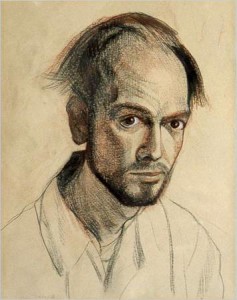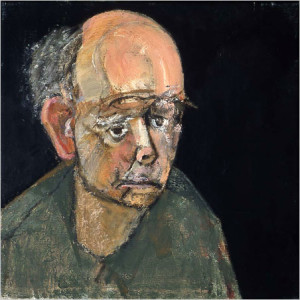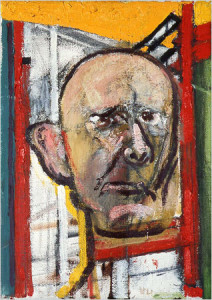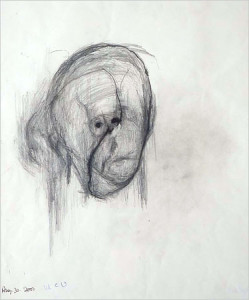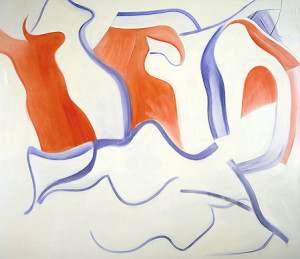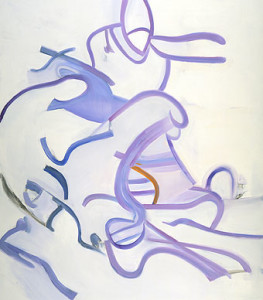Neurodegenerative disorders are the most common and debilitating disease afflicting the elderly
Neurodegenerative disorders
Neurodegenerative disorders very often show inclusions in the brain that are composed of protein aggregates. Up to 10 years ago, scientist were sure that the protein composition of these inclusions were specific for one neurodegenerative disorder. In 2004, Claudio Soto published in Nature Reviews, that Aβ and tau were characteristic for Alzheimer’s disease, α-synuclein for Parkinson’s disease and prions, huntingtin and superoxide dismutase for their specific diseases.
Today, however, we know that several of these neurotoxic aggregating proteins are present in most neurodegenerative disorders. So, e.g. in Alzheimer’s disease in addition to Aβ and tau, John Trojanowski at the University of Pennsylvania found that α-synuclein was present, and Stephen Strittmatter at Yale University found that prions are also present and promote progression of the disease.
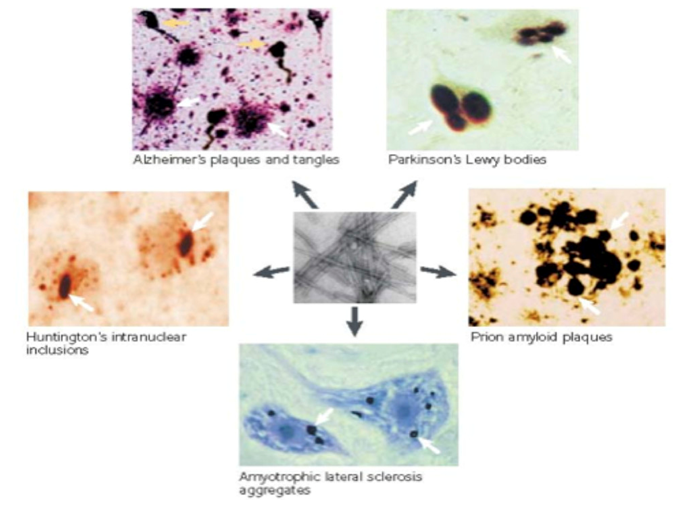
Alzheimer’s disease – plaques and tagles, Parkinson’s disease – Lewy bodies, Huntington’s disease – huntingtin inclusions, Creutzfeldt Jakob’s disease – prion amyloid plaque, amyloid lateral sclerosis – super oxide dismutase inclusions
Neurotoxic Aggregating Proteins
Protein overproduction, misfolding and aggregation likely underpin many common neurological and systemic diseases. On the neurological side, this diverse group of diseases includes Alzheimer’s disease (AD), Parkinson’s disease (PD), Huntington’s disease (HD), transmissible spongiform encephalopathies (TSEs) and amyotrophic lateral sclerosis (ALS). Despite obvious differences in the neural cell population impacted, clinical symptoms and disease progression, these disorders share common features and regulatory elements that are relevant to the mechanism of action of Posiphen®.
Neurotoxic aggregating proteins such as APP, aSYN, tau, huntingtin (Htt), prions and superoxide dismutase (SOP1) share similar features relative to gene activation, protein synthesis, folding and misfolding, toxicity, aggregation and degradation:
QR Pharma understands how brain cells die in diseases linked to brain aggregates. Its lead compound, Posiphen®, can modulate the expression of neurotoxic aggregating proteins, thus protecting brain cells from their toxic effect and keeping them alive, in chronic as well as acute brain insults.
Common features of toxic aggregating proteins:
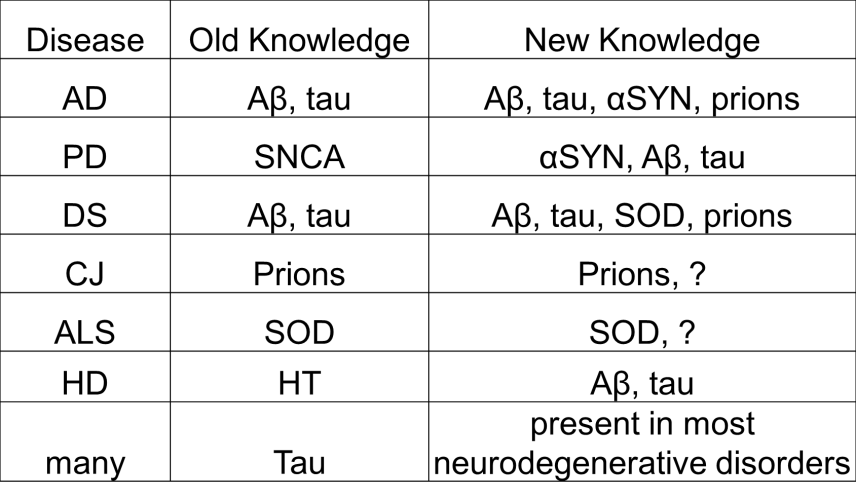 Transcription is regulated by Cu/Zn
Transcription is regulated by Cu/Zn
Translation is up-regulated by Fe and down-regulated by iron regulatory protein-1 (IRP1)
At normal concentrations they have a benign function
At high concentrations they form toxic oligomers
They are all infective, if injected into the brain
Their degradation goes through the proteasome
Cells sequester these toxic oligomers into amyloid aggregates to neutralize them
AD- Alzheimer’s disease, PD – Parkinson’s disease, DS – Down Syndrome, CJD – Creutzfeldt Jakobs disease, ALS- amyloid lateral sclerosis, HD – Huntinton’s disease. αSYN – α-synuclein, SOD – superoxide dismutase, Htt – huntingtin protein.
Artist’s Portrayal
Illustration of Alzheimer’s disease through Art
Their paintings show the disintegration of their cognition and their brains
These artists continued to paint while suffering from Alzheimer’s: William Utermohlen, and Willem de Kooning. Paintings created during the years of their disease provide a rare opportunity to look into the world of an Alzheimer’s patient; they testify to sustained motivation to create. Common to these painters was the continuous urge to create, despite considerable cognitive impairment. Their art enables us to have a close look into the deteriorating mind of the Alzheimer’s sufferers.
William Utermohlen – Stages of Alztheimer’s Disease
William Utermohlen (1935-2007), Alzheimer’s disease was diagnosed at the age of 61. After his diagnosis he painted a series of 15 self-portraits. Although they show distortions in proportion and defects in spatial organization that became more evident as the disease progressed, the portraits are characterized by an extraordinary ability to express emotion, as well as by originality: each is a new piece of work, not an attempt to copy a previous painting. – William Utermohlen Self-Portraits, 1997 ©Galerie Beckel Odille Boïcos williamutermohlen.org
Willem de Kooning’s – Stages of Alztheimer’s Disease
Willem de Kooning’s (1904-1997) Alzheimer’s was diagnosed in his late eighties. During the following years, he painted more than 300 abstract paintings, which art critics assess as among the finest and most sensitive artistic achievements in contemporary painting. Despite cognitive limitations, de Kooning was able to muster the concentration to continue painting. – Julie Sylvester, Associate Curator of Contemporary Art, State Hermitage Museum.

